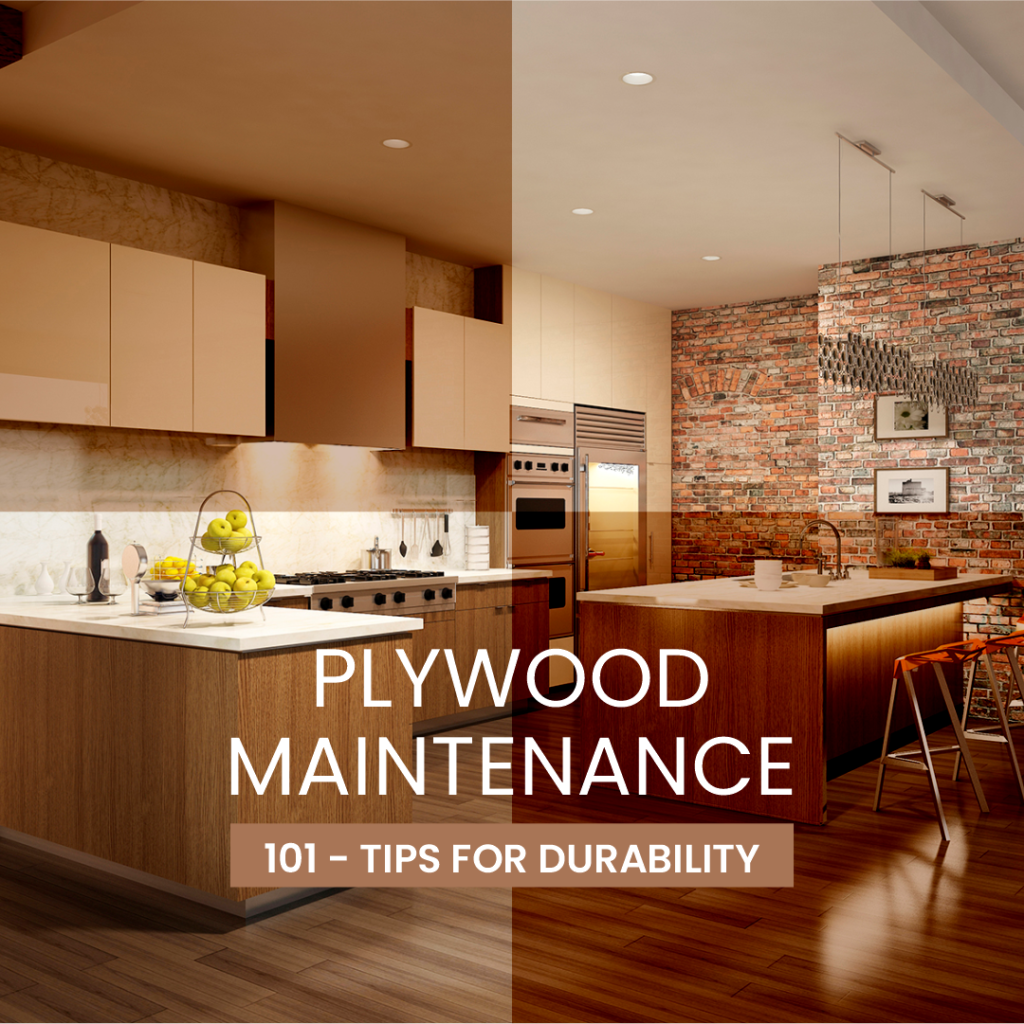Thanks to its versatility of applications, strength, endurance, and cost-effectiveness, plywood is one of the most widely used materials for construction as well as carpentry. However, it does need maintenance checks at regular intervals of time to ensure its long lifespan and performance. A number of people ponder over the question of how to maintain a structure made from plywood – but don’t fret, we are here to help! In this blog post, we will dive into the very basics of maintenance of even the best plywood and give out tips to reinforce its durability while also retaining its aesthetic appeal.
Frequent checks
The foremost rule for the maintenance of any type of plywood is to always keep an eye out for early signs of wear and tear or depreciation. If you notice even the slightest warping, delamination, or discoloration, it is an indication to address it in order to enhance the lifespan of your furniture or structure. It is important to not neglect any potential issues that can cause a major problem in the future – instead of letting them escalate and cause bigger and more costly repairs, frequent monitoring can help you get rid of all problems at the early stages.
Maintaining proper cleanliness
The importance of keeping the surface of your furniture clean cannot be overstated – it helps in keeping its external appeal intact and preventing the build-up of grime and dust. You can use a clean, wet cloth or sponge with either detergent or a wood cleaner to ensure the cleanliness of the same. All plywood board manufacturers in India will advise you to dry the plywood surface thoroughly to ensure that it retains no moisture, leading to more issues in the future.

Ensure protection against pests
A lot of untreated plywood is prone to damage from pests such as termites, dust mites, and more. It is crucial to choose the right type of plywood at the time of carpentry, or you will need to apply coatings to the plywood that make it resistant to pest infestations and ensure that your furniture lasts for a longer duration. During your regular checks, ensure that you pay special attention to whether there has been any pest activity, and take measures consequently. However, if you live in areas that are prone to such infestations, increase the frequency of the application of such protective layers.
Keep in mind the load-bearing capacity
First of all, ensure that the type of plywood you use for any of your project requirements is calibrated plywood – it is a comparatively stronger and sturdier type of plywood. With uniform thickness at every edge, it is more stable than uncalibrated plywood. That being said, irrespective of your furniture being made from any type of plywood, it is always a good idea to be mindful of the amount of weight or impact it can bear. Such mindfulness can be a key mechanism to avoid any dents, warps, delamination, or altogether deterioration.
Ensure the least exposure to sunlight
It is common knowledge that exposure to sunlight for longer amounts of time can lead to the plywood getting discolored. It can lose its aesthetic appeal and even lead to the plywood getting delaminated or warped. To avoid this, you can apply paints or finishing touches to your plywood that have UV-resistant properties and ensure that the harmful effects of the sun do not affect your furniture. This type of coating can also help preserve the structural integrity of your furniture, ensuring it lasts for a longer duration.
Promptly repair
Even though all the available ply types in India are strong and durable, if you notice any issues with your furniture, it is a good idea to get it repaired promptly. Such immediate and brisk repairs can help avoid riskier, costlier, and more damageable issues in the future, thus extending the lifespan of your furniture or structure. Always keep an eye out and ensure that no dent, bend, warp, or more goes unnoticed and that everything is repaired in time.
Regulate moisture
If any untreated plywood is exposed to moisture, it can cause it to swell, warp, or even grow mold. To tackle this, make sure that if you live in an area prone to moisture, you have a proper ventilation system that can address the issue. It is also important to ensure that such plywood is also kept safe from water leaks as it can lead to the same damage.
Final thoughts
To wrap it all up, it is needless to say that proper maintenance and care are fundamental to ensuring that your plywood structure stands the test of time. Even the best plywood needs appropriate care to preserve its strength, performance, as well as appearance. By taking all the right measures, you can ensure that your plywood will last for years.

